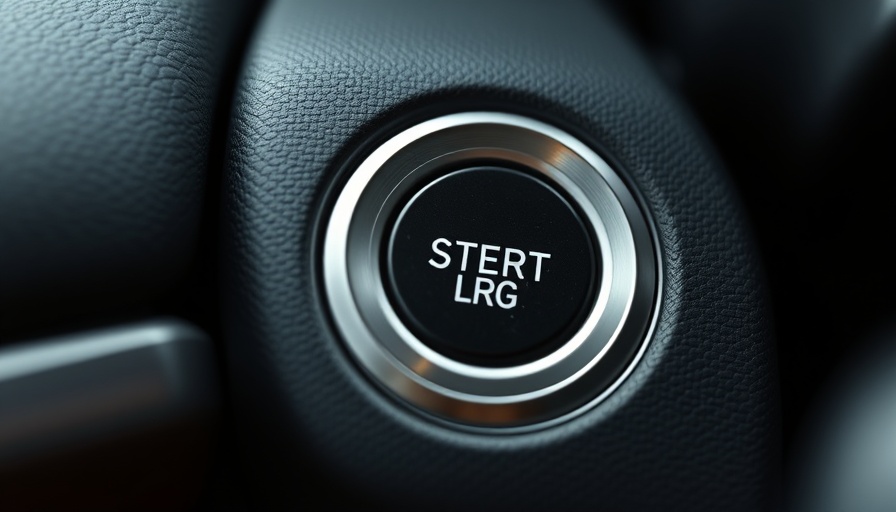
The Rise of Auto Start-Stop in Modern Vehicles
In the realm of automotive technology, the auto start-stop feature is quickly becoming mainstream, particularly in newer car models. This innovation promises not only to enhance fuel efficiency but also to contribute to greener driving practices. As homeowners increasingly consider sustainability in all aspects of life, this feature aligns perfectly with a growing desire to protect our environment while also managing household budgets effectively. When your car stops at a red light, its engine turns off, saving fuel and minimizing emissions. While this may sound beneficial, car owners may be curious if there are any hidden downsides to using this feature consistently.
How Does Auto Start-Stop Affect Your Vehicle?
One prevalent concern among drivers is whether constantly engaging the engine wear and tear on essential components, notably the starter. Experts like Kye Grisham, vice president of Procurement and Automotive Technology, assure car owners that modern starters are engineered to endure the demands of this system. “These starters are built differently from traditional starters and can handle the increased quantity of starts,” Grisham explains. This reassuring information should alleviate any worries about the longevity of your vehicle’s starter if the feature is left on.
Pros and Cons of Auto Start-Stop Features
When weighing the decision to engage the auto start-stop feature, understanding both the pros and the cons is crucial. On one hand, this technology can lead to substantial fuel savings—particularly in city driving, where stop-and-go traffic is common. On the other hand, some drivers may find the frequent on-and-off starts jarring or bothersome. As Grisham notes, the choice ultimately boils down to personal preference: if you value environmental benefits and cost savings, you will likely want to keep the auto start-stop function on during your daily commutes.
Real-Life Experiences with Auto Start-Stop
For those who have integrated the auto start-stop feature into their driving routine, reactions vary from enthusiastic endorsements to mild frustrations. Many drivers appreciate the small savings accumulating over time, particularly during their routine trips around town. However, it’s become common to hear anecdotes from those who opted to disable the feature for a smoother driving experience, particularly those accustomed to the gentle hum of a continuously running engine while idling.
Future Trends in Automotive Technology
Looking ahead, the evolution of car technology will likely introduce even smarter fuel-saving features. As automotive engineers refine the balance between performance and efficiency, forward-thinking innovations may offer enhanced convenience without compromising drivers' comfort. Emerging hybrid models now offer this feature alongside battery support, positioning the auto start-stop not only as a means of conserving fuel but also as part of the future of eco-friendly driving.
Actionable Insights for Car Owners
To determine the best choice for your driving habits, consider a simple test: engage the auto start-stop feature for your daily routes for a couple of weeks. Track your fuel consumption and get a feel for how it alters your driving experience. If the savings are notable, it might be worth embracing fully. However, if you find the feature disruptive to your driving comfort, you might choose to switch it off next time you’re at a traffic light.
Ultimately, whether to disable the auto start-stop feature should align with your own priorities regarding fuel efficiency and comfort. In a world increasingly focused on sustainability, making an informed choice in the car you drive becomes not only a personal decision but a responsible one for the planet.
 Add Row
Add Row  Add
Add 




Write A Comment